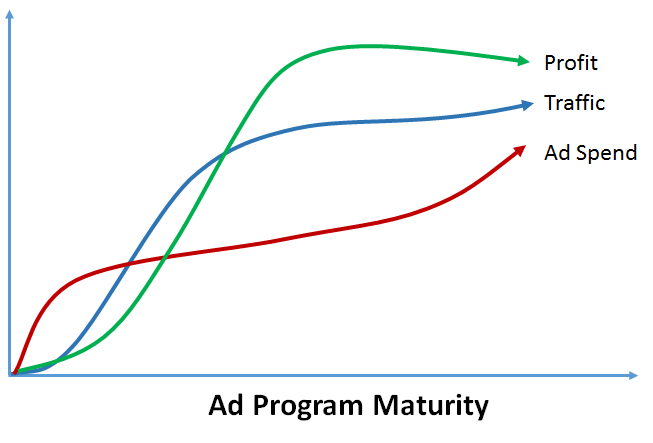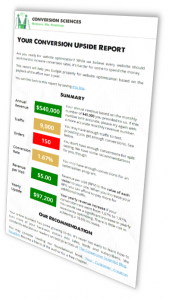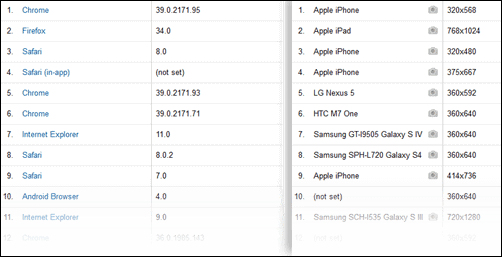You want to improve your conversions but no money to fund this effort. We’ll walk you through 4 sure-fire ways to get a CRO budget for next year.
If you ever went to the government and asked them what your fair share of taxes should be, they would first ask you how much you made last year.
And that would likely be the answer.
Likewise, a conversion optimizer would probably be the last person to ask how much to budget for conversion optimization. “How much budget do you have?”
Nonetheless, I’m going to give you the tools to add conversion optimization to your budget next year. Then, when you call us next year, you’ll be ready.
Where to Get Your CRO Budget
One key question you need to ask is, where will I get my CRO budget? I have some suggestions.
1. From IT
The basis of any conversion optimization effort is a sound analytics and measurement foundation. This consists of tools that slide under your website and are bolted in place. This is IT stuff.
Our research has shown that most businesses’ websites have some level of implementation of analytics. You don’t want to be left behind. This is a crucial behavioral database that will be invaluable as you begin to vet ideas for testing.
2. From the Things You Should be Testing Anyway
It is a golden age of marketing. We have more tools, data sources and shiny objects to drive our online businesses than any marketers have ever had. We can mobile gamify our ratings and review process using direct visitor feedback to drive personalization throughout our content funnels.
In other words, we’re overwhelmed, and the first sign of a marketing department that is overwhelmed is the decision to redesign.
Your website probably doesn’t need a redesign. It probably needs to be optimized.
Put the redesign money into an optimization program and see immediate results.
There is a good way to get your head around all of the things you could be doing to your site. You could test the ideas. Instead of blindly pouring money into exit-intent popovers, live chat, or personalized recommendations, you should test them. We have seen these work and we have seen them fail.
Your conversion optimization team will know how to use data to make good decisions on where to spend your money. Budget for optimization first.
3. From Your Ad Spend to Get a CRO Budget
Paid search is a great way to generate qualified traffic. However, our success in search causes our fundamentals to “regress”. It becomes harder to increase traffic, and the new traffic often is less qualified, less profitable.
When your traffic is flat, ad spend is rising and profit is dropping, you know you should be putting some of that into optimization.
This may seem like a no-brainer, but there is a period of sweat and anxious hand-wringing.
You see, conversion optimization takes time. There is a very real dip in performance. When you reduce spending on ads you reduce your traffic and your revenue. For a period of time, your revenue drops until your optimization efforts get traction.
It might look something like the graph below. This assumes a modest 5% increase in revenue per visit (RPV) each month for one year, and that 8.9% of ad spend, or $8900, is invested in optimization each month. In this example, we began with a conversion rate of 1.7%.

If you can make it through a short valley of death, borrowing from your ad spend can be very profitable.
Monthly revenue dips due to the reduction in PPC traffic. Revenue returns to baseline levels in month four. Revenue is positive in month six compared to investing in PPC only.
The Return on CRO (green line) turns sharply north, even though we are still investing 8.9% of ad spend each month.
This is what powers conversion optimization. You have a compounding effect working in your favor, but you have to invest on the front end.
Send me an email if you want to see all my assumptions.
It’s this four-to-six month dip that marketers and managers fear. How do you sell a drop in revenue to your boss?
4. Pony Up
The other option is to reach into your own profits and slap down some cash on your conversion optimization team.
I’m not going to sugar coat this. There are three costs you must deal with when investing in optimization.
The Components of a Conversion Optimization or CRO Budget
The Software
The first cost is the least bothersome. Conversion optimization requires a certain amount of data to succeed.
Testing is not that hard. Deciding what to test is quite difficult.
The competition in the marketplace is pretty brutal. Each year, we get more functionality from cheaper and cheaper tools. At a minimum, you’ll want a good click-tracking tool, a good session recording tool, a strong analytics database and a split-testing tool.
Depending on your traffic, these can be had for a few hundred dollars each month up to several thousand dollars each month.
The Team
None of these tools matter if you don’t have someone to pull the levers, turn the knobs and read the graphs. The main functions found on a conversion optimization team are:
- A researcher to collect qualitative data.
- A statistically-responsible person to collect and evaluate quantitative data.
- A developer to create the changes in each test.
- A designer to implement design changes.
- A patient QA person to be sure nothing is broken by a test.
- A project manager to keep the momentum going.
It is possible to have one super-amazing person who can do all of this. It is the death-knell of your conversion optimization program to ask someone to do all of this in addition to another job. Your PPC person is not going to be able to do all of this and their job too.
These are fairly expensive employees. Consider hiring an outside agency, like us, to get started. As of this writing, Conversion Sciences can provide these functions for less than ten-thousand dollars a month.
The Opportunity Costs
There is a cost to testing that is not seen in reports. It’s the cost of losing treatments. In any list of “good” ideas for increasing your conversion rate and revenue per visit, fully half will actually do more harm than good. We don’t know which of our ideas are “losers” until we test them. When we test, some percentage of your visitors will see these losers, be turned off, and won’t buy.
This is lost revenue. With proper management, this downside can be minimized, but it is the cost of doing business. It’s the price of admission, the overhead, the burn, that funny smell in the kitchen.
It’s hard to budget for this particular line item, but it should be part of your discussion.
Be Clear About Your Upside
If I haven’t scared you off, there is good news. We call it the upside, the green bling, statistical bignificance, and sometimes we just dance.
You should understand what your statistical significance is. You must know the answer to the question, “What happens if my conversion rate goes up a little?” We call this a Basic Unit of Upside.
We offer our Conversion Optimization Upside Report to help you understand your upside. It calculates what your yearly increase in revenue would be if you only added 0.1 to your conversion rate or revenue per visit. Plug in a few numbers and you’ll see what small changes mean for your bottom line.
A Little More Motivation to Get a CRO Budget
For most businesses, conversion optimization is a ten-thousand-dollar a month investment or more. Many businesses are spending a whole lot more than that.
If conversion optimization is on your “maybe next year” list, consider what might happen if you give your competitors a year’s head start on you.
The business with the highest conversion rate has the lowest acquisition cost and can profitably boost bids on their paid advertising. Plus, Google favors high-converting landing pages when assigning ad placement.
With a realistic understanding of the costs of conversion optimization and a real appreciation for the potential upside, you should be able to make the case for adding it to your shopping list this year.
Feature image by frankieleon via Compfight cc and adapted for this post.
























